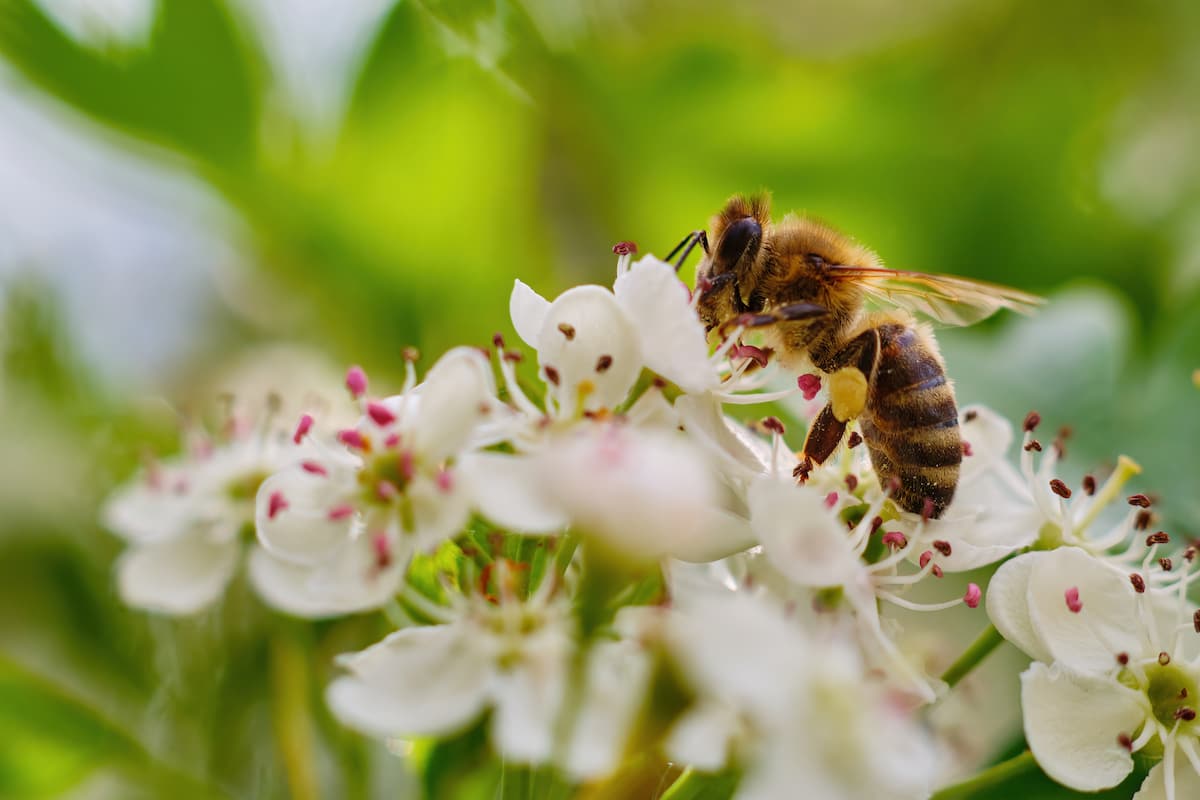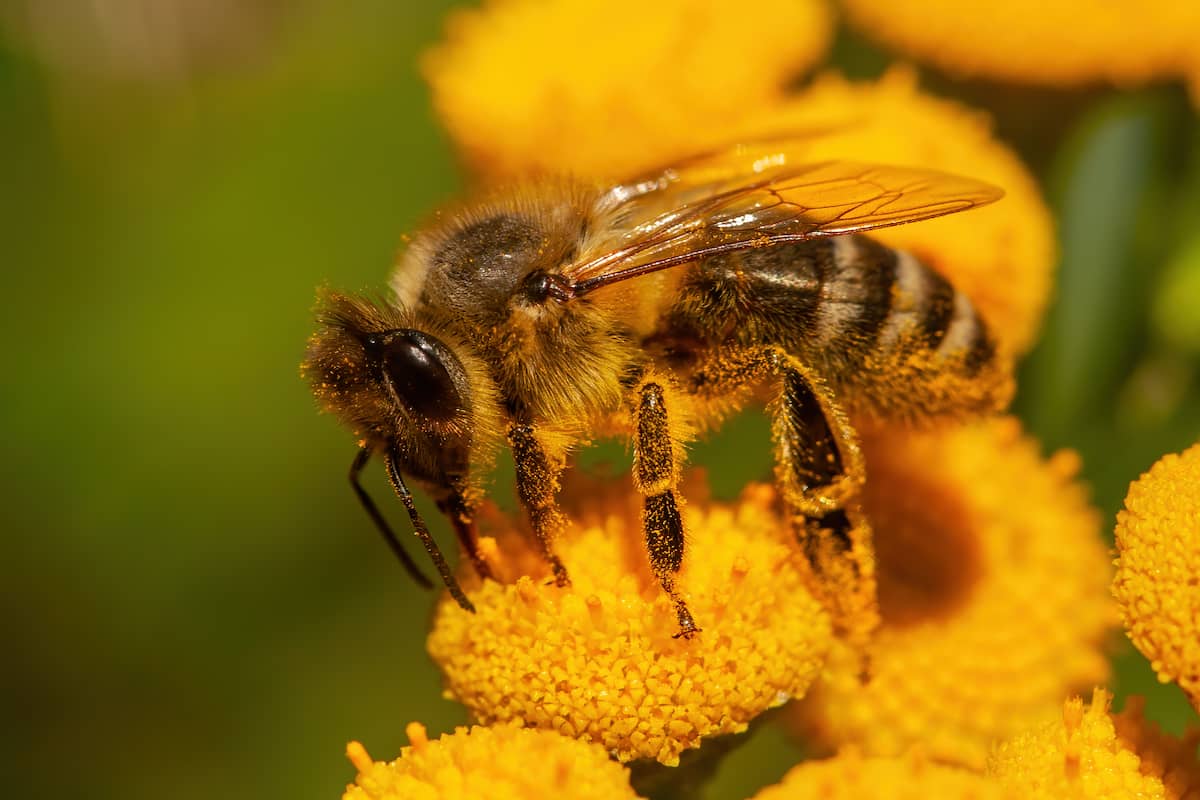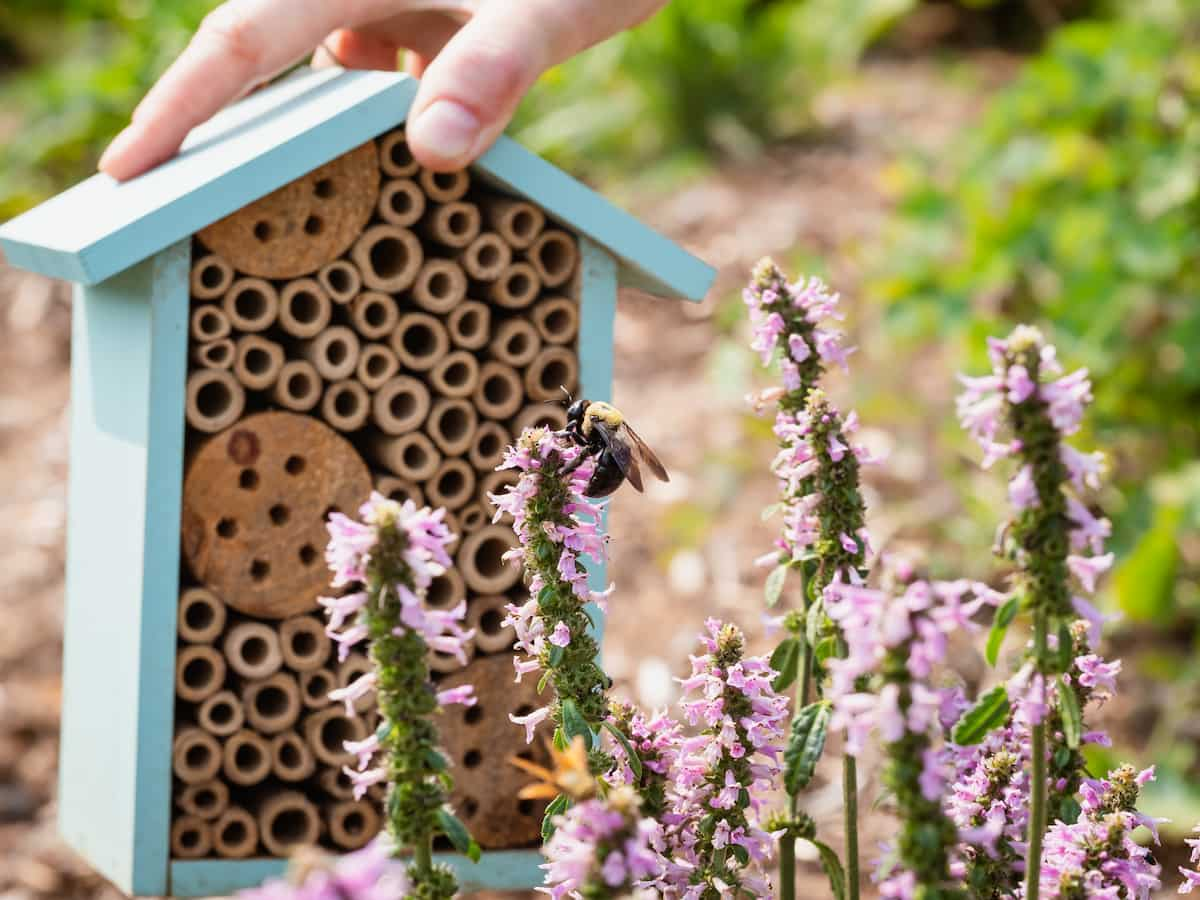The decline of insects seriously threatens our ecosystem and food supply. Three-quarters of flowering plants rely on insects for pollination, including crops that provide a third of the world’s food supply. Insects are also a vital food source for birds, fish, and small mammals, making them the foundation of the food web. However, even small actions can make a significant difference in preserving insect populations.

Homeowners can help by planting native flowers and trees, providing pollinator host plants and nesting sites, and avoiding pesticides. By creating a pollinator-friendly environment in their yards, individuals can contribute to conserving helpful insects like monarch butterflies and native bees. Overall, we must take action to protect insects and the essential role they play in our ecosystem.
How to Create Pollinator Gardens
Choose Plants That Support Pollinators
Choosing native plants for your garden can help establish a better environment for pollinators. Planting in clusters and leaving areas for wildflowers can create a target for pollinators to find. Diversified sources of nectar, including shrubs and trees like dogwood, blueberry, cherry, and poplar, can provide pollen and nectar throughout the growing season.
It’s also important to choose planting sites with partial sun, protection from wind, and nearby water sources for pollinators. A pollinator strip along a vegetable garden or wildflower border can attract and support pollinators like bees and hoverflies, which also control crop pests. By taking these steps, individuals can contribute to preserving essential insect populations.
Attract Beneficial Insects
Insects like native bees play a crucial role in our ecosystem by pollinating food crops and flowers. Unlike European honey bees, solitary native bees like mason and leafcutter bees are the most important pollinators. To attract them to your garden, consider installing a native bee hotel, which can be as simple as drilling holes of varying sizes in a dead tree. By creating nesting sites, you can help support these essential pollinators and ensure a healthy food supply.
Go Easy on the Chemicals
It’s important to deter pests in your garden without harming the food you’re growing or beneficial insects. Chemical fertilizers and pesticides can harm the environment and kill more than just the targeted pests. Instead, consider using less-toxic options like diatomaceous earth, neem oil, and Bacillus thuringiensis. There are also many organic pesticides available that effectively control pests. If you do use pesticides, be sure to follow all label directions carefully.
Mix in Companion Plants
Companion planting is pairing plants to repel pests and attract pollinators. For example, planting dill and basil alongside tomatoes can protect against hornworms. Companion plants improve each other’s health and yields. Mixing flowers and vegetables are also beneficial as certain flowers can confuse and repel pests, leading to a healthier garden. You don’t have to choose between growing ornamentals and edibles.
Encourage Birds
Birds are not only pollinators but also eat pests. To encourage them to visit your garden, provide clean water using a shallow dish, bowl, or birdbath with perches. Set up bird feeders and nesting boxes, plant flowers that attract hummingbirds, and make your nectar. Please don’t cut down flower heads of sunflowers, coneflowers, and black-eyed Susans in fall, as they provide a valuable food source for birds in winter.
In case you missed it: Robotic Bees for Pollination: Tiny Drones for Artificial Pollination in Agriculture, Pros, and Cons

Be Water-Wise
Being mindful of water usage is crucial for a pollinator-friendly landscape. Choose drought-tolerant native plants such as sedum and speedwell for dry areas, while moisture-tolerant plants like iris and ferns are suitable for wet areas. Drip irrigation systems are ideal for gardens and flower beds, while timers can be used for sprinklers. Consider harvesting rainwater using a rain garden or barrel, and use organic mulches to retain moisture in the soil. Leave some bare ground for nesting pollinators. Mulch also helps slow water down, preventing runoff and benefiting soil health.
Try Composting
Instead of throwing away vegetable scraps and yard trimmings, consider composting them to create rich, fertile soil for your garden. Composting also encourages the growth of compost-making worms and bugs. There are different types of composting, such as in-garden composting and vermicomposting.
Additionally, you can make compost tea as a natural fertilizer for your ornamental gardens. Composting is an eco-friendly way to use fallen leaves and avoid sending waste to landfills. Check out our compost recipe and instructions on composting, vermicompost, and making compost tea.
Reduce, Reuse, Recycle
To care for themselves and nature, gardeners can adopt a reduce, reuse, and recycle approach. Buying bulk and delivering materials to your yard can reduce plastic bag waste. Old plastic pots and trays can be reused, recycled, or returned. Gardeners can also make biodegradable plant pots. These practices help reduce waste and promote sustainability in gardening.
Add Some DIY Accents
Creating DIY accents in your garden is a fun and easy way to provide additional food sources for pollinators. Try making a hummingbird feeder from recycled bottles using homemade nectar made of four parts water to one part table sugar. Butterflies and bees also need salt, so create a salt lick by mixing table salt or sea salt into a puddle or damp region in your garden. Look near a dripping faucet, birdbath, or irrigation system, or leave a sponge in a dish of lightly salted water to create the same effect. These simple DIY projects can help support pollinators in your garden.
Help Your Pollinators Thrive
Spot pollinators like bees and butterflies struggling to fly and crawling about on the ground may indicate that they are exhausted and need nourishment. Providing them with readily available food can help them recover more quickly. You can mix a simple warm water and sugar solution in a shallow container and place it near them.
In case you missed it: A Guide to Sustainable Gardening: Explained in 10 Steps

This will provide them with an energy boost to help them continue with their important pollination work. It’s important to remember to use white granulated sugar, as other sweeteners may contain additives that can harm pollinators.
Conclusion
Creating a pollinator garden is an excellent way to support the ecosystem and promote biodiversity. To create a successful pollinator garden, you should choose a sunny location, select various plants that bloom at different times, avoid using pesticides, provide shelter, and add a water source. With these simple steps, you can attract a wide range of pollinators to your garden, including bees, butterflies, and hummingbirds. Remember that creating a pollinator garden is an ongoing process, so continue learning and adapting your garden to support these essential creatures.
- Feed Your Flock for Less: Top 10 Tips to Save on Chicken Feed
- Ultimate Guide to Ossabaw Island Hog: Breeding, Raising, Diet, and Care
- Hatching Answers: The Top 10 Reasons Your Chickens Aren’t Laying Eggs
- Eggs and Economics: Breaking Down the Cost of Raising Backyard Chickens
- Defend Your Greens: Proven Methods to Keep Iguanas Out of Your Garden
- Ultimate Guide to Cinnamon Queen Chicken: A Comprehensive Guide for Beginners
- Ultimate Guide to California Tan Chicken: Breeding, Raising, Diet, Egg-Production and Care
- Ultimate Guide to Marsh Daisy Chicken: Breeding, Raising, Diet, and Care
- 10 Types of Chicken Farming Businesses You Can Start for Profits
.